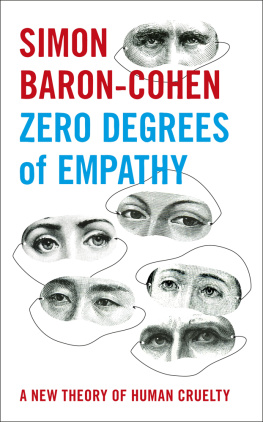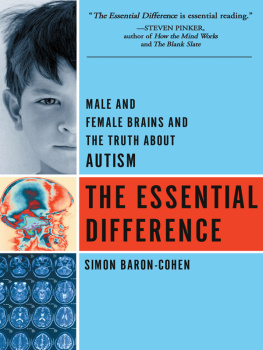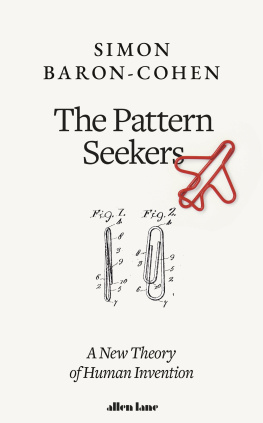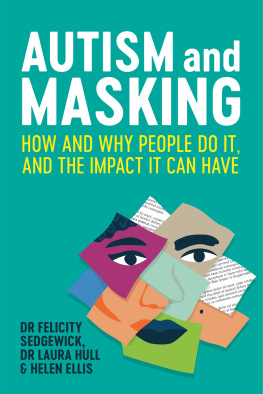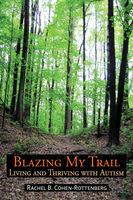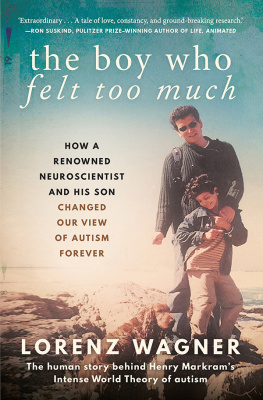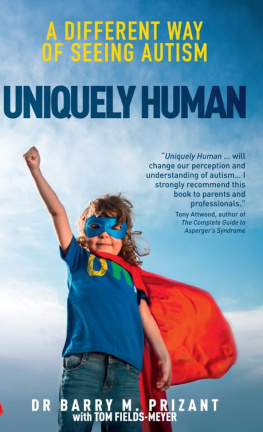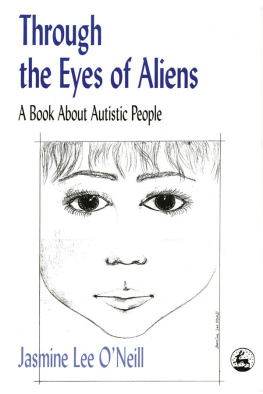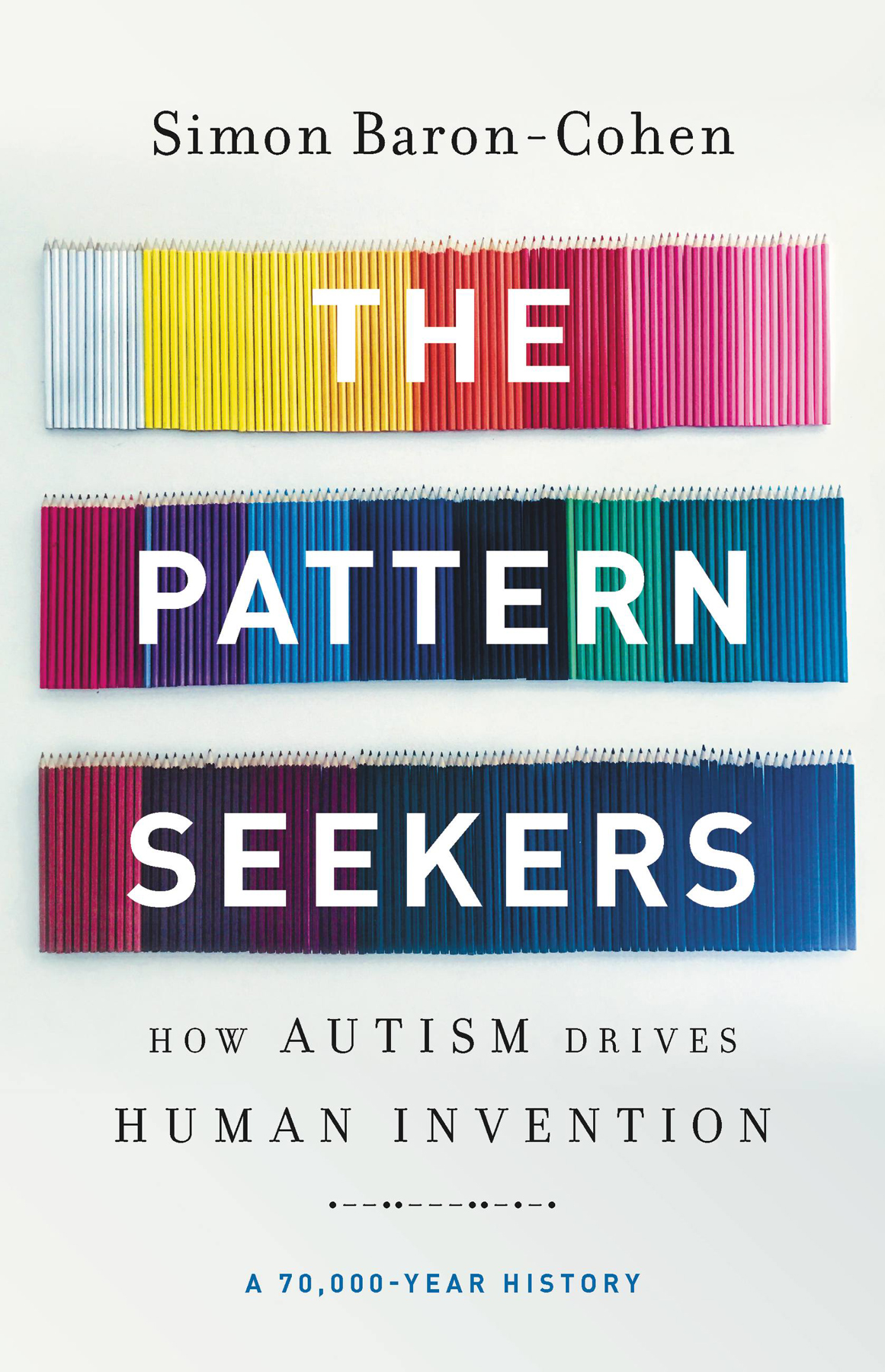
Copyright 2020 Simon Baron-Cohen
Cover design by Chin-Yee Lai
Cover image copyright Ludimarie Solante / EyeEm via Getty Images
Cover copyright 2020 by Hachette Book Group, Inc.
Hachette Book Group supports the right to free expression and the value of copyright. The purpose of copyright is to encourage writers and artists to produce the creative works that enrich our culture.
The scanning, uploading, and distribution of this book without permission is a theft of the authors intellectual property. If you would like permission to use material from the book (other than for review purposes), please contact permissions@hbgusa.com. Thank you for your support of the authors rights.
Basic Books
Hachette Book Group
1290 Avenue of the Americas, New York, NY 10104
www.basicbooks.com
First Edition: November 2020
Published by Basic Books, an imprint of Perseus Books, LLC, a subsidiary of Hachette Book Group, Inc. The Basic Books name and logo is a trademark of the Hachette Book Group.
The Hachette Speakers Bureau provides a wide range of authors for speaking events.
To find out more, go to www.hachettespeakersbureau.com or call (866) 376-6591.
The publisher is not responsible for websites (or their content) that are not owned by the publisher.
Adapted and redrawn figures are thanks to Patti Isaacs.
Emma Brown assisted with researching and obtaining permissions.
Library of Congress Cataloging-in-Publication Data
Names: Baron-Cohen, Simon, author.
Title: The pattern seekers : how autism drives human invention / Simon Baron-Cohen.
Description: First edition. | New York : Basic Books, 2020. | Includes bibliographical references and index.
Identifiers: LCCN 2020019709 | ISBN 9781541647145 (hardcover) | ISBN 9781541647138 (ebook)
Subjects: LCSH: Autism. | Autistic people.
Classification: LCC RC553.A88 B3684 2020 | DDC 616.85/882-dc23
LC record available at https://lccn.loc.gov/2020019709
ISBNs: 978-1-5416-4714-5 (hardcover); 978-1-5416-4713-8 (ebook)
E3-20201016-JV-NF-ORI
Discover Your Next Great Read
Get sneak peeks, book recommendations, and news about your favorite authors.
Tap here to learn more.

Explore book giveaways, sneak peeks, deals, and more.
Tap here to learn more.

Based on massive research, Simon Baron-Cohen argues that most of us are specialized in how we perceive the world around us. There are those who focus on people and those who focus on things. The author makes a compelling case that the second kind of mindthe pattern seekeris at the root of modern human civilization.
F RANS DE W AAL , author of Mamas Last Hug
Always years ahead of others, always bolder in mind and in action than others, Simon Baron-Cohen now synthesizes a secret of human creativity born out of difference. Where others saw disability, he saw specialness. Like nature itself, the beauty of the human mind comes from its diversity.
A MI K LIN , Bernie Marcus Distinguished Chair in Autism at Emory University
A fascinating account of the mechanisms underlying the related capacities of both autistic individuals and innovators.
B RIAN J OSEPHSON, winner of the Nobel Prize in physics
The Pattern Seekers is a book of big ideas and is sure to excite intense discussion and debate, fueled by Baron-Cohens lively prose and thought-provoking stories.
D ANIEL J. P OVINELLI, author of World Without Weight
Simon Baron-Cohen is one of the greatest thinkers and writers today on the subject of autism. In this erudite new book he explains that autistic peoples strongly systematic way of thinking differently is one of the essential elements in the capacity for invention. Baron-Cohen explores how obsessively experimenting with patterns and sequences, whether in music, the visual arts, math, engineering, cooking, or observing the patterns of the ocean waves, led to new inventions and discoveries. He has recalibrated the lens through which autism is understood and redefined it as a rare potentiality, to be valued and celebrated. His bold new idea, that the genes for autism drove the evolution of human invention, places this disability center stage in the story of humans. If you have ever wondered why geniuses spend so much time alone in their sheds, this illuminating book starts to give us an answer to that question.
J OOLS H OLLAND, musician
The Pattern Seekers is a game-changing book, a passport into exploring the world of innovation and creativity. Most importantly, it celebrates autistic people and is a call for action, to welcome neurodiversity.
D AVID J OSEPH, chairman and CEO of Universal Music UK
Simon Baron-Cohen, an internationally acclaimed authority on human brains, has written a fascinating book that illuminates the spectrum of thinking styles. After reading it, youll better understand the personalities of your friends and colleagues!
M ARTIN R EES, author of On the Future
In memory of
BRIDGET LINDLEY
(19592016)
Who gave her love to our family
In dedication to autistic people
Sometimes it is the people no one
can imagine anything of who do
the things no one can imagine.
ALAN TURING
The Imitation Game
Al didnt talk until he was four years old. Even when he started talking, it was clear he was using language differently to most kids. His mind was different right from the starthe was less interested in people and more focused on spotting patterns, and he wanted explanations for everything he saw. He asked people incessant why? questions, to understand how things worked. It was exhausting for his listeners. His unstoppable curiosity was at one level refreshing, yet his need for complete explanations was also often just too much for others. He was clearly a different kind of child.
He showed some other unusual characteristics too. For example, he would chant Thomas Grays Elegy Written in a Country Churchyard over and over (a habit that lasted his whole life). At school, his teachers became exasperated with his persistent questioning. One teacher, in frustration, described Als brain as addled, meaning confused. But Als mind was anything but confused. Rather, his relentless questions were requests for greater clarity because he found other peoples explanations of how things work vague. He wanted to build up an orderly, evidence-based picture of the world. From his perspective, everyone elses way of thinking was sloppy and imprecise.
But his mother was worried. She could see that her son was frequently being reprimanded in class and put down by his teachers, and she worried this would damage his self-confidence. She needed to act decisively. So, when he was eleven, she decided to pull him out of school completely and to home-school him. This was not a decision she took lightly. But given his insatiable appetite for knowledge and the school viewing him so negatively, this seemed the right thing to do. Her child had a right to learn in the way that suited his different kind of mind.


